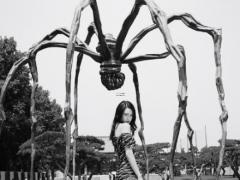清明节的来历英文版简短20字
Clear and Bright Festival, also known as Qingming Festival, is a traditional Chinese festival where people pay respects to their ancestors and enjoy the outdoors.

1、History and Origins
Clear and Bright Festival has a long history dating back to the Zhou Dynasty, over 2,500 years ago. It originally started as a way for people to worship the gods of nature and began to be associated with ancestral worship during the Tang Dynasty. The festival is celebrated on the 15th day after the spring equinox, usually falling on April 4th or 5th.
Through the centuries, the traditions of the festival have evolved but the core remains the same: to honor and remember one's ancestors. Many people will visit the graves of their loved ones and clean the area as a way to show their respect. There is also a tradition of offering food and other items to the spirits of the ancestors, which is thought to bring good luck and fortune to the living family members.
Additionally, it is a time for people to enjoy the outdoors as the spring weather is typically pleasant and mild. Kite flying and other outdoor activities are popular during this time.
2、Traditional Customs
Along with visiting graves and offering sacrifices, there are many other customs associated with Clear and Bright Festival. One of these is the practice of "cold food" (han shi) where people eat only cold food one day before the festival as a way to mourn the death of Jie Zitui, a loyal official during the Zhou Dynasty. Jie Zitui is revered for his service to the people and is seen as a symbol of righteousness and loyalty.
Another custom is the burning of "joss paper" (zhuyin) which are paper replicas of items like clothes, money, and houses as offerings to the spirits of ancestors. This practice is believed to bring wealth and comfort to the spirits and is done in the hopes that the ancestors will look favorably upon their living descendants.
Many people also plant willow branches on the roof of their homes as a way to ward off evil spirits and illness. The willow branches are believed to have the power to absorb negative energy and bring good luck and blessings to the family.
3、Cultural Significance
Clear and Bright Festival is a reflection of Chinese cultural values and beliefs. The festival emphasizes the importance of family and ancestral heritage, as well as the cycle of life and death. It is a time to remember and honor those who have come before us and to consider the impact that our actions will have on future generations. Moreover, it is a time to appreciate the beauty of nature and the changing of the seasons.
The festival has also been recognized by UNESCO as an Intangible Cultural Heritage of Humanity, highlighting its importance and significance to the world at large.
4、Modern Celebrations
Today, Clear and Bright Festival is still an important holiday in China, with many people taking time off work and school to visit the graves of their loved ones. The practice of ancestral worship is still strong, but modern technology has allowed for new ways to pay respects. Online memorial websites and smartphone apps have become popular in recent years, allowing people to post virtual offerings and tributes to their ancestors from anywhere in the world.
Furthermore, people still enjoy the outdoors during this festival, with kite flying, picnicking, and other recreational activities being popular choices. In some parts of China, competitions and festivals centered around kite-flying have become a part of the celebration.
Overall, Clear and Bright Festival remains an important part of Chinese cultural heritage and a time for families and communities to come together.
综上所述:Clear and Bright Festival,亦称清明节,是我国传统节日之一,人们在这一日前往祖先的墓地缅怀先人,并在春光明媚的大自然中享受时光。清明节源于周朝,起初是人们祭拜自然之神,后随着唐朝时期祭祀祖先而成为一种文化习俗。传统的清明节包括扫墓、焚烧祭品以及飞扬的风筝等,它意味着家庭和传统文化的重要性,并且被联合国教科文组织列为人类非物质文化遗产。现代清明节庆祝活动也开始使用在线纪念网站和智能手机应用程序的虚拟祭奠的形式。
 起名字大全,宝宝起名宝典,取名字,姓名测试打分-免费取名网记
起名字大全,宝宝起名宝典,取名字,姓名测试打分-免费取名网记






